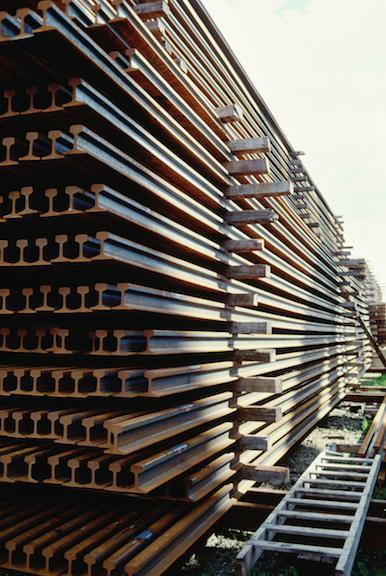The Supply & Demand Basics Of The Current Tariff Chaos
In what was supposed to be an effort on the part of the US President and his administration early last year, to try and balance out trade with China and also to support his so-called America First program, a number of tariffs were established which affected both US industries and their suppliers of scrap and manufactured metals.
The establishment of these tariffs, like many of the policies of the current US administration, had the lofty goal of improving the US economy, which their president kept stressing (and falsely so, of course) was out of whack in favor of all the US trading partners, Canada among them.
But the real fight here was with China, simply because the perceived imbalance there was the largest. Also, like many of the policies of the current US
 administration, this one was very poorly thought out, and as a result, ended up crashing both scrap metal and manufactured metal prices.
administration, this one was very poorly thought out, and as a result, ended up crashing both scrap metal and manufactured metal prices.
This happened because large investors in the manufacturing and construction sectors dramatically slowed the buying of inventory and equipment to build new plants, because the import tariffs and the retaliatory export tariffs, which were a logical consequence of this action, created a huge amount of uncertainty and chaos in the markets.
So when you apply the simple logic of supply and demand, you see that the shrunken demand has created a substantial downward dip in metal prices.
In a nutshell, the tariff war, primarily between the US and China, combined with the interconnectedness of metal-producing and consuming countries around the world created one of the most chaotic market situations we have experienced in quite some time
How This Translates Into Reality
A few months ago there was an interesting article in one of our industry trade publications, American Metal Market, about the USA Steel Mfg. Association meeting, where this story was told.
A manufacturer of steel nails who regularly purchased the raw steel for his nails from China was suddenly faced with the cost increase of a 25% tariff on his steel.
He contacted his customers to let them know that he needed to increase his prices and was willing to absorb some of the 25% increase, which made his net increase about 18%.
As a result, literally half of his customers canceled their orders, leaving him no choice but the layoff half of his employees.
Because these tariffs were selective, and nobody really understood the criteria for exemption, his customers could order nails from other countries with lower tariffs or no tariffs at all.
Now multiply this same effect by the literally hundreds of companies that are importing metals from China or other US tariff target countries.
Then add to this the number of countries that have initiated retaliatory tariffs on imports from the US, and you have a pretty good idea of just how much business chaos is being caused by this tariff activity.
Supply & Demand: The Other Side Of The Coin
 Another article in American Metal Market explains that when the current US administration first initiated these tariffs, one of the main reasons given was that US steel mills were producing less steel than ever and therefore were employing fewer people.
Another article in American Metal Market explains that when the current US administration first initiated these tariffs, one of the main reasons given was that US steel mills were producing less steel than ever and therefore were employing fewer people.
This, of course, was not true. Because of automation, the steel mills needed fewer employees but were actually making more steel than in previous years.
But with tariffs and metal prices being equalized around the world, US steel mills are now looking for more employees but cannot find anywhere near enough who are qualified for this type of skilled labor. This is because many of the workers displaced, mainly by automation, moved on, developed other skills, found new jobs, and are very leery of coming back into the highly vulnerable steel industry. Supply
So it’s one thing to have a demand situation, but if you can’t find workers to create the supply, the net result is simply more chaos: less productivity, less supply, and a precarious business climate.
Hamstrung Industries & Wasted Effort
As an editorial aside from this entire issue, the one thing I do not understand is why countries like the USA and Canada export scrap steel to the point where they actually are creating demand shortages in their own countries. This, in turn, requires them to import scrap steel country from other countries to fill their needs. Supply
This wasteful practice is detrimental to the environment because shipping and transporting millions of tons of scrap around the world is a substantial source of pollution. But also, in the current tariff-rich world business environment, this can definitely create added costs to whatever products are being manufactured with this steel.
And at the end of the day, this invariably takes its’ toll on increases in end-user costs, and the profit margins of any companies caught up in this situation. Yep…more chaos.
Post Script: In May of this year the US dropped the tariffs on steel and aluminum from Canada and Mexico, we assume, as part of a good-faith gesture to help ensure the ultimate success of the new (NAFTA) USMCA agreement. However, this is really a relatively small battle in the larger tariff war that the US is raging with China and several other countries, as well as the European Union. Supply & Demand
You can read more about this issue here: https://www.dw.com/en/us-drops-steel-and-aluminum-tariffs-on-canada-and-mexico/a-48781256
 Download The Peel Scrap App
Download The Peel Scrap App
Just a reminder that our mobile app is available in both mobile operating systems. The app is free to download and available at both the iTunes and Google Play stores. It will keep you current on prices in addition to providing other useful links and information. (Search: Peel Scrap Metal Recycling).
Download for Apple mobile devices
Download for Android mobile devices
